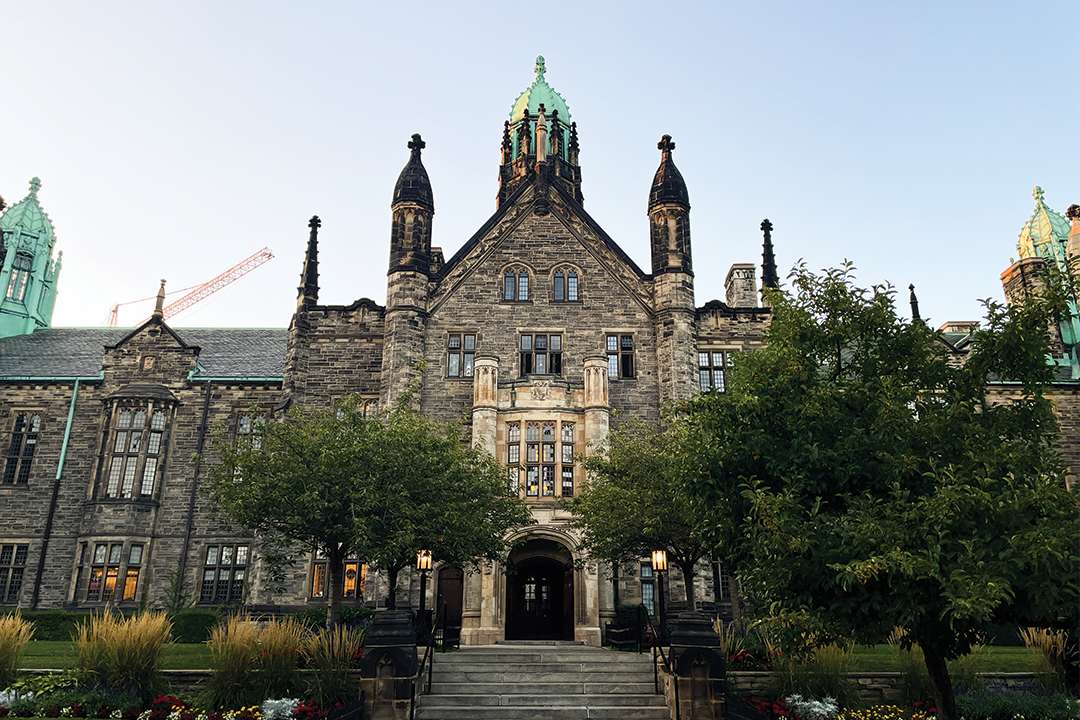In all my years at U of T, TRN196 — Joy and Resistance in Diverse Storytelling remains the course with the most culturally diverse and accessibility-friendly syllabus I have encountered. In the most unexpected ways, this unique and inspiring course marked a turning point in my life as a student and writer.
TRN196 — instructed by Leanne Toshiko Simpson, a U of T alumna — was influenced by the founding students of Trinity College’s BIPOC Writing Circle where members had the opportunity to propose a new syllabus. Rather than studying the typical Western canon, TRN196 spotlights recent indie publications from BIPOC and authors with disabilities.
Students were challenged to consider a range of worldviews that are often systemically ignored by reading about Johanna Hedva’s struggle with depersonalization disorder, Kai Cheng Thom’s exploration of queerness, and Alicia Elliott’s celebration of Indigenous identity.
Studying texts about marginalized experiences that I saw myself reflected in was vulnerable, validating, and terrifyingly refreshing. Simpson — a Japanese-Canadian woman diagnosed with bipolar disorder — admitted in an interview with The Varsity that she “[has] always been uncomfortable that some stories are seen as ‘universal’ while others are relegated to ‘niche’, and [with] the idea that good academic writing must maintain a certain kind of distance in order to be credible.”
Along with being a literary course, TRN196 is a quasi-creative writing course, with writing sprints — inspired by the literary text of that week — that would take place at the end of each class. Being an author herself, Simpson provided us with experimental prompts and feedback that developed our writing by strides. We even had opportunities to meet the writers of the texts we studied, allowing an intimate deep dive into their writing processes. It was a course where academic and creative learning methods melted into one another.
The popularity of TRN196 shows that there is a demand from students to not only learn about diversity, but also for BIPOC and students with disabilities to have their social realities reflected in academia and explore creative writing through the lens of their specific marginalized experiences. It is proof that valuable knowledge also lies outside the ‘canon’ works of Homer, Chaucer, and Shakespeare. And, importantly, it emphasizes the intrinsic value of having representation in the classroom itself. Inviting members of a marginalized community to educate others by drawing from their personal experiences is more profound than the traditional modes of academia that bring almost an anthropological barrier to the content.
Given the allegations against Trinity College in recent years of perpetuating a culture of racism, classism, homophobia, and more, TRN196 is necessary for addressing the college’s deep-rooted history of institutional discrimination. It is a step in the right direction — albeit a small one.
Nonetheless, TRN196 was aware of the connotations of inserting ‘diverse’ literature into an academic setting. Simpson wanted to strike a balance between “what BIPOC authors are ‘teaching’ us” and the “artistic expansiveness of their work.” In my academic experience, trauma-centred stories are often the only way that marginalized authors are included in a syllabus; TRN196 empathizes with authors’ pain yet also decenters this focus onto their joy and community. After all, what else is survival and thriving in the face of systemic injustice but one of the greatest acts of resistance?
Diversity and inclusion transcended the syllabus and into the classroom environment; class participation was observed with significant consideration of accessibility. Recalling her undergrad days, Simpson noted missing “morning classes because [her] bipolar medication was too strong, [and] trying to explain medical absences to a professor who thought that accommodations were just ‘special treatment.’ ”
Therefore, participation in TRN196 manifested in options such as peer note taking, emailing creative writing pieces privately rather than sharing them aloud with the class, attending class via Zoom if an in-person class was not feasible, and even joining field trips with the Writing Circle. Deadlines were set collaboratively with students and were generally flexible to take their mental health into consideration. It was the first time I witnessed such great depths of compassion within U of T’s rigorous climate of academia.
Despite eventually completing the course, its impact on my life remains palpable to this day. In fact, the course was designed with the intention of helping students get their work published, as Simpson would supervise students’ editing and publication processes.
I went into the course having little to no experience in creative writing. Being implicitly taught that BIPOC experiences are ‘unprofitable’ — with 75 per cent of Canada’s publishing industry in 2022 being white — writing never seemed like a realizable goal. And, to be honest, I wasn’t even aware that TRN196 would be a creative writing course until I skimmed through the syllabus a day before class started. In retrospect, I’m lucky that I jumped in half-blind, as it probably prevented my doubts and insecurities from immediately causing me to unenroll myself from the course.
It was my first year at university and the first time TRN196 was offered on campus. Little did I know that this would be a great act of serendipity that would lead to me finding a new community at Trinity’s BIPOC Writing Circle, the publication of one of my first completed pieces of writing, and a writer’s grant from the Writer’s Union of Canada. Looking back now, TRN196 is truly the course that spearheaded it all.
Charmaine Yu is a third-year student at Trinity College studying political science and English. She is a member of Trinity College’s BIPOC Writing Circle and an editor of The Trinity Review.



No comments to display.